
Boca Chica all lit up 
301 stainless steel plates 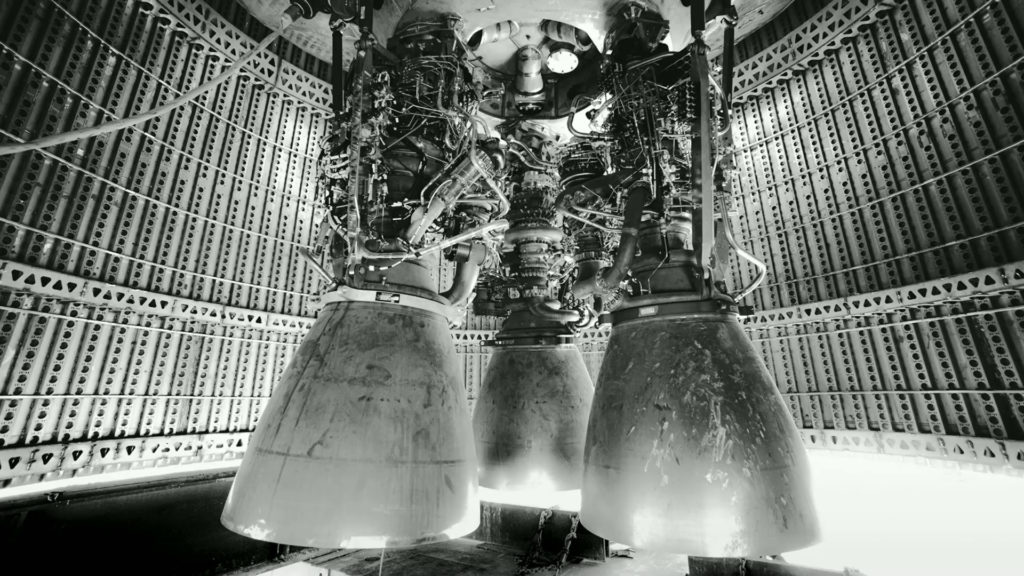
3 gimballed Raptors 
Starship stands upright at Boca Chica 
Starship unveiled at Boca Chica (SpaceX)
The SpaceX Starship prototype, dubbed “Mark 1”, was at the forefront during a major press event at Boca Chica Island, Texas, 29 Sep 2019 0030 UT. The stainless steel vessel, polished to a mirror sheen and welded in concentric circles to a Buck Rodgers-esque apex, barely budged in the face of stiff winds on the sand spit, even as Grasshopper strained at its tiedowns just behind it.
Musk commented on the past 11 years in orbit for SpaceX, opening with a recap of key launches, and providing details of a vessel that will double the scale of the entire field of spaceflight the moment it reaches orbit. When it flies to orbit in 2020, Starship will clock in at 120 tons dry with 150 tons of payload, accelerated by a colossal first stage booster twice the power of the Saturn V.
Despite the sizzling details and aspirations for Starship and its booster, Musk’s details were notably vague on crew modules and life support systems. With the dearMoon flight date of 2023 looming, Musk offered thanks for Yusaku Maesawa’s investment and a bit of spontaneous speculation.
STARSHIP
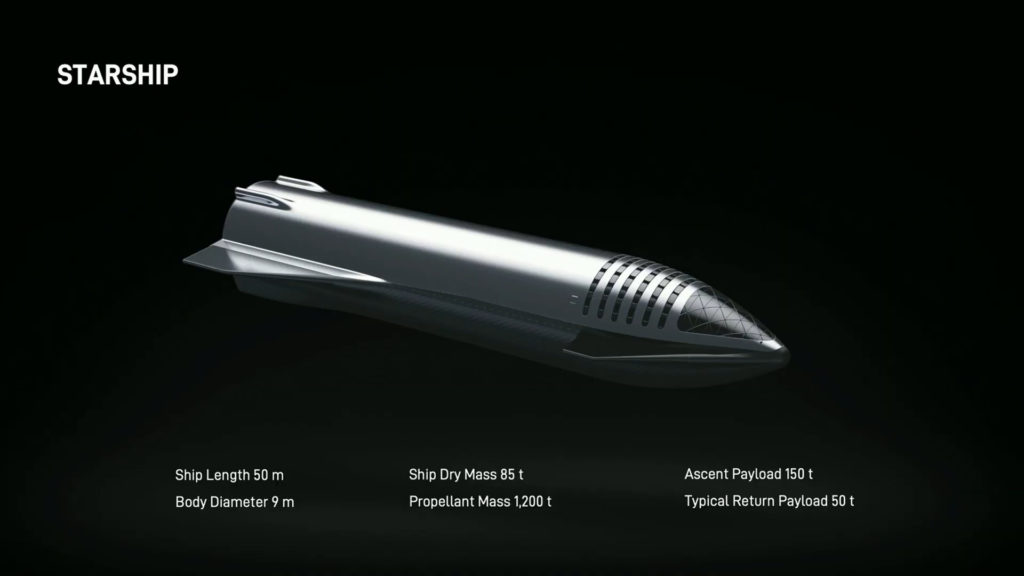
Base specs for Starship 
Orbital fuel transfer 
Landing simulation 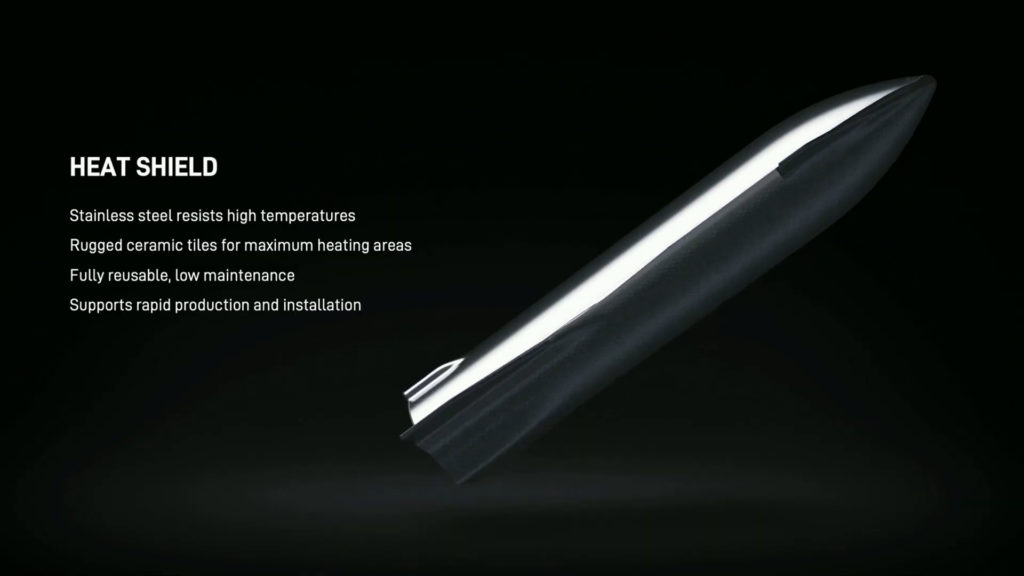
One side of Starship is covered in heat shielding (SpaceX)
The main event featured the gleaming Starship standing near the stage of the late-evening, outdoor press conference. The Mark 1 is a test platform with three sea-level Raptor engines. This vehicle will be able to make suborbital flights, the next being a flight to 20km altitude within 2 months’ time.
Later models that make the leap to orbit, with an extra three Raptor engines, with their expansive vacuum bells filling the remaining area at the base of the vessel. While these will provide the most efficient thrust in outer space, they will be stationary. Motion control can still be performed by the three gimballed sea-level Raptors, or by hot gas thrusters, essentially mini-rocket motors, in the RCS packs.
For those who weren’t already up to speed on his Carnegie-like axe to millions of dollars worth of carbon fibre production equipment, Musk also resumed his enthusiastic advocacy of the thermal properties of 301 stainless steel. The “glass vermicelli” heat shield that is hex tiled onto the belly of Starship is light and thin with the present design. A switch to something other than steel would require a much thicker, heavier heat shield, so much so that it just isn’t worth it.
Though the overall mass was first estimated at 85 tons (and this dated figure still made it into the presentation slides), the final mass for Starship is actually about 120 tons. Iteration may cut that to 110, or in a possible edge case, 99. A Starship can launch with up to 150 tons of payload, though it will need upgrades to land with the same amount. At first, it will only be able to land with 50 tons in the holds.
Starships will be capable of on-orbit fuel transfer, allowing the unspent fuel from earlier missions to top up long-distance voyages. Musk claimed that it was easier to dock two Starships rear-to-rear for fuelling than it is to dock a crew capsule at the International Space Station, something SpaceX has already done.
In fact, a single crewed Starship flight would be in at least one sense, as big as all previous achievements in spaceflight. Each Starship’s thousand cubic meters of pressurized habitation space is about the the same as what exists in the entire International Space Station. And Musk is not talking about building just a handful of Starships in some sort of modern take on the Space Shuttle program, but a fleet of 20 or more providing useful, even excess capacity, to reduce the hurdles to access space.
STARSHIP BOOSTER

Super Heavy Booster specs 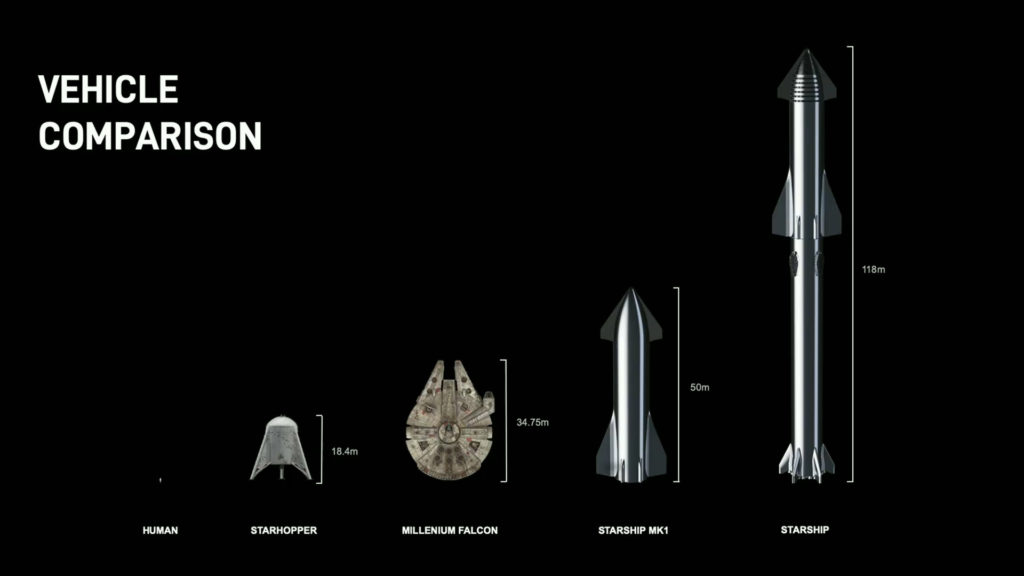
How it all stacks up (SpaceX)
The first stage for any orbital flight of Starship will require the largest rocket ever built, with up to double the thrust of the Saturn V. The Starship’s Super Heavy booster, which has gone by many names over the course of its development, is a reusable first-stage rocket of immense size, made from the same stainless steel as Starship, its smooth cylindrical shape punctuated only by its landing gear and diamond-shaped grid fins, and outputting 7500 tons-force of thrust.
The Starship Booster will have a variable engine loadout centred around a central core of seven gimballed Raptor engines. The thirty remaining engine mounts are stationary: four under each of six fin-legs, and an additional six mount points in the remaining space between the exterior and the central core. Though it supports a maximum count of 37, Musk suggested that early orbital tests of Starship Booster might use as few as 31 Raptors. In service, the exact number of engines could be customized to the launch need.
RACE TO MARS
The Starship program will feature two spaceports – Boca Chica and Cape Canaveral. Both facilities will have full-plant construction capacity and will compete in a race to the first interplanetary crewed mission. As such, Musk’s onetime suggestion that Boca Chica “could” be the site of that mission remains a distinct possibility, though equally shared with Cape Canaveral. Ultimately it will be decided not by neither fiat nor chance, but rather, a fair scrimmage in an engineering competition.
The race to Mars will require leaps in production capacity, and SpaceX is scaling to meet the demand. Presently capable of turning out a new Raptor engine in just over a week, Musk’s goal is to cut that in short order to one every three days, then one a day as Starship nears normal operations. 100 Raptor engines will be needed just to get Starship and Starship Booster through orbital testing.
UNPRECEDENTED SPEED
With a first orbit set for as soon as March 2020, Musk also suggested that crew could fly on Starship “next year”, not long after the first flight, because the reusability of the system allows its reliability to be quickly demonstrated. Such a feat would put SpaceX, presently just a couple months ahead of other space companies on commercial spaceflight, in a breakaway lead far ahead of every state and private spaceflight program.
It’s a pace that just might be plausible, given that, when the design was finally ready, the Starship Mark 1 was built in less than 5 months. Further models are scheduled to be built at an accelerated pace. Along the way, they’ll incorporate improvements – for example, the first two Starships were built like grain bins out of rectangular plates of steel. From Mark 3, steel coils will be unspooled to the right diameter and welded along just three edges, reducing complexity.
In the quest to accelerate development, building Starship outdoors proved to be the winning move, another of the advantages steel construction has over costlier materials. There are still plans to build indoor production facilities; at Boca Chica specifically, SpaceX has tendered an offer to buy out the entire village, which would provide development room as well as reduce the logistical problems of moving residents to safety during launches.
UNPRECEDENTED SCALE
Musk reiterated the potential of Starship to completely outscale the existing launch services market. Musk tossed some back-of-the-napkin numbers, a fleet of 10-20 Starships orbiting 1.5 to 3 gigagrams per year, dwarfing the existing space industry by a factor of 1000 or more. All of that capacity and more would be needed for a serious effort to settle the Moon and Mars.
Those optimistic estimates, rely on pretty fast turnaround times – Musk envisions a booster capable of being flown 20 times a day – that’s more turnarounds than most regional jets! A particular Starship, on the other hand, might fly as many as 4 times per day, with returns to Earth more practically limited by orbital precession and the number of active spaceports.
EXTRAORDINARY CLAIMS
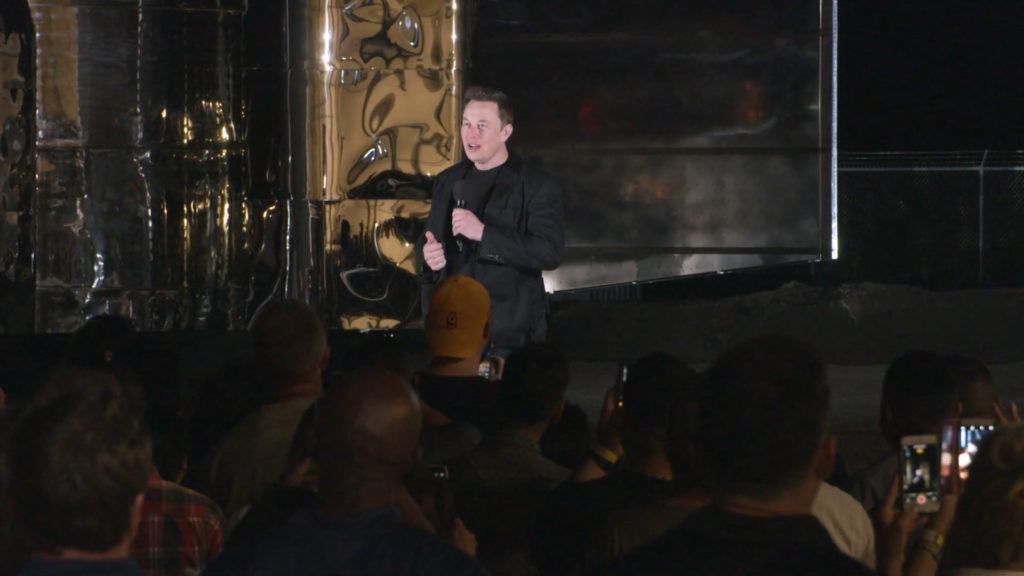
All of this detail remains for the most part, breathless reporting of Elon Musk’s claims about what the Starship program will look like. It’s a big deal. It’s also a lot of things, all at once, that have never been done before.
No one has ever made a methane rocket this big.
No one has ever taken four humans around the Moon.
No one has ever taken humans to Mars.
SpaceX can easily be counted among the organizations in the world that can believably take on these challenges. It has shown a steady and strenuous pace of increased capabilities, but from time to time, it has needed the occasional pause to regroup. Still, for now, Starship appears to be a well-managed program with sophisticated engineers hitting technical milestones at rates not seen in the space industry since the 1960s.
